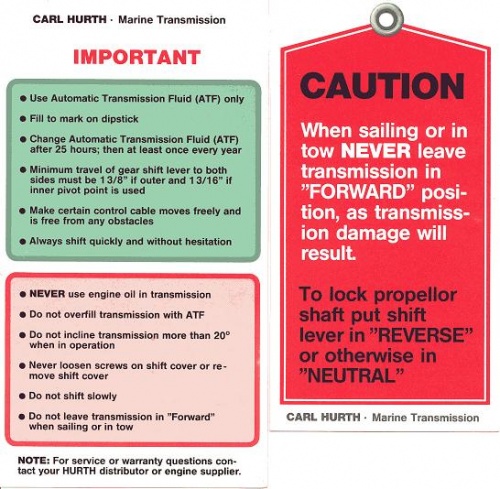I noticed on a recent thread someone was asking whether to rebuild or replace the tranny that had failed on his boat.
It got me wondering if the failure was not due to how the tranny was configured during sailing. So the question is,primarily for those with Yanmars,what do you do with your transmission when you've turned off the motor and are sailing.
I've sailed with many captains and the primary thing they do is shift the trans into reverse to stop the prop from spinning. But have found this counter to my belief that a prop spinning;1/ provides less resistance and 2/ is less likely to cause damage to the transmission.
It got me wondering if the failure was not due to how the tranny was configured during sailing. So the question is,primarily for those with Yanmars,what do you do with your transmission when you've turned off the motor and are sailing.
I've sailed with many captains and the primary thing they do is shift the trans into reverse to stop the prop from spinning. But have found this counter to my belief that a prop spinning;1/ provides less resistance and 2/ is less likely to cause damage to the transmission.

